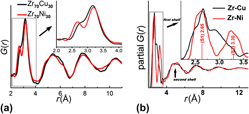Crossref Citations
This article has been cited by the following publications. This list is generated based on data provided by
Crossref.
Antonowicz, J.
Pietnoczka, A.
Drobiazg, T.
Almyras, G.A.
Papageorgiou, D.G.
and
Evangelakis, G.A.
2012.
Icosahedral order in Cu-Zr amorphous alloys studied by means of X-ray absorption fine structure and molecular dynamics simulations.
Philosophical Magazine,
Vol. 92,
Issue. 15,
p.
1865.
Ediger, M. D.
and
Harrowell, Peter
2012.
Perspective: Supercooled liquids and glasses.
The Journal of Chemical Physics,
Vol. 137,
Issue. 8,
Yu, Ruomeng
Pan, Caofeng
Hu, Youfan
Li, Lin
Liu, Hongfei
Liu, Wei
Chua, Soojin
Chi, Dongzhi
and
Wang, Zhong Lin
2013.
Enhanced performance of GaN nanobelt-based photodetectors by means of piezotronic effects.
Nano Research,
Vol. 6,
Issue. 10,
p.
758.
Sciuto, Antonella
Mazzillo, Massimo
Badala, Paolo
Scuderi, Mario
Carbone, Beatrice
and
Coffa, Salvatore
2014.
Thin Metal Film Ni2Si/4H—SiC Vertical Schottky Photodiodes.
IEEE Photonics Technology Letters,
Vol. 26,
Issue. 17,
p.
1782.
Lahiri, Debdutta
Sharma, Surinder M.
Verma, Ashok K.
Vishwanadh, B.
Dey, G. K.
Schumacher, Gerhard
Scherb, Tobias
Riesemeier, Heinrich
Reinholz, Uwe
Radtke, Martin
and
Banerjee, S.
2014.
Investigation of short-range structural order in Zr69.5Cu12Ni11Al7.5and Zr41.5Ti41.5Ni17glasses, using X-ray absorption spectroscopy andab initiomolecular dynamics simulations.
Journal of Synchrotron Radiation,
Vol. 21,
Issue. 6,
p.
1296.
Guo, Gu-Qing
Wu, Shi-Yang
Luo, Sheng
and
Yang, Liang
2015.
Detecting Structural Features in Metallic Glass via Synchrotron Radiation Experiments Combined with Simulations.
Metals,
Vol. 5,
Issue. 4,
p.
2093.
Kalinina, E. V.
Lebedev, A. A.
Bogdanova, E.
Berenquier, B.
Ottaviani, L.
Violina, G. N.
and
Skuratov, V. A.
2015.
Irradiation of 4H-SiC UV detectors with heavy ions.
Semiconductors,
Vol. 49,
Issue. 4,
p.
540.
Guo, G.Q.
and
Yang, L.
2015.
Structural mechanisms of the microalloying-induced high glass-forming abilities in metallic glasses.
Intermetallics,
Vol. 65,
Issue. ,
p.
66.
Lioliou, G.
Mazzillo, M.C.
Sciuto, A.
and
Barnett, A.M.
2015.
Electrical and ultraviolet characterization of 4H-SiC Schottky photodiodes.
Optics Express,
Vol. 23,
Issue. 17,
p.
21657.
Kuchuk, A. V.
Borowicz, P.
Wzorek, M.
Borysiewicz, M.
Ratajczak, R.
Golaszewska, K.
Kaminska, E.
Kladko, V.
and
Piotrowska, A.
2016.
Ni-Based Ohmic Contacts ton-Type 4H-SiC: The Formation Mechanism and Thermal Stability.
Advances in Condensed Matter Physics,
Vol. 2016,
Issue. ,
p.
1.
Vikas, L.S.
Vanaja, K.A.
Subha, P.P.
and
Jayaraj, M.K.
2016.
Fast UV sensing properties of n-ZnO nanorods/p-GaN heterojunction.
Sensors and Actuators A: Physical,
Vol. 242,
Issue. ,
p.
116.
Salčinović Fetić, Amra
Remenyi, Georgy
Starešinić, Damir
Kuršumović, Ahmed
Babić, Emil
Sulejmanović, Suada
and
Biljaković, Katica
2017.
Analysis of the fragility of theZr77Ni23metallic glass based on low-temperature heat capacity measurements.
Physical Review B,
Vol. 96,
Issue. 6,
Zhang, Wei-Hu
Zhang, Fu-Chun
Zhang, Wei-Bin
Zhang, Shao-Lin
and
Yang, Woochul
2017.
First-principle study of the structural, electronic, and optical properties of SiC nanowires.
Chinese Physics B,
Vol. 26,
Issue. 5,
p.
057103.
Ghaemi, Milad
Tavakoli, Rouhollah
and
Foroughi, Alireza
2018.
Comparing short–range and medium–range ordering in Cu Zr and Ni Zr metallic glasses – Correlation between structure and glass form ability.
Journal of Non-Crystalline Solids,
Vol. 499,
Issue. ,
p.
227.
Chang, P. K.
and
Hwu, J. G.
2018.
Enhanced irradiance sensitivity of 4H-SiC based ultraviolet sensor introducing laterally gated Al/SiO2/SiC tunnel diode structure with low gate bias.
Journal of Applied Physics,
Vol. 124,
Issue. 2,
Yang, M.
Li, J.
Liu, B.
and
Liu, J.
2018.
Atomistic Simulations to Predict Favored Glass-Formation Composition and Ion-Beam-Mixing of Nano-Multiple-Metal-Layers to Produce Ternary Amorphous Films.
Metals,
Vol. 8,
Issue. 2,
p.
129.
Gottwald, Alexander
Kroth, Udo
Kalinina, Evgenia
and
Zabrodskii, Vladimir
2018.
Optical properties of a Cr/4H-SiC photodetector in the spectral range from ultraviolet to extreme ultraviolet.
Applied Optics,
Vol. 57,
Issue. 28,
p.
8431.
Matthus, Christian D.
Bauer, Anton J.
Frey, Lothar
and
Erlbacher, Tobias
2019.
Wavelength-selective 4H-SiC UV-sensor array.
Materials Science in Semiconductor Processing,
Vol. 90,
Issue. ,
p.
205.
Uzun, Ali
and
Teker, Kasif
2019.
Impact of channel scaling on performance of single SiC nanowire UV photodetector.
Journal of Nanophotonics,
Vol. 13,
Issue. 02,
p.
1.
Roul, Basanta
Pant, Rohit
Chowdhury, Arun Malla
Chandan, Greeshma
Singh, Deependra Kumar
Chirakkara, Saraswathi
Nanda, K. K.
and
Krupanidhi, S. B.
2019.
Highly Responsive ZnO/AlN/Si Heterostructure-Based Infrared- and Visible-Blind Ultraviolet Photodetectors With High Rejection Ratio.
IEEE Transactions on Electron Devices,
Vol. 66,
Issue. 3,
p.
1345.
